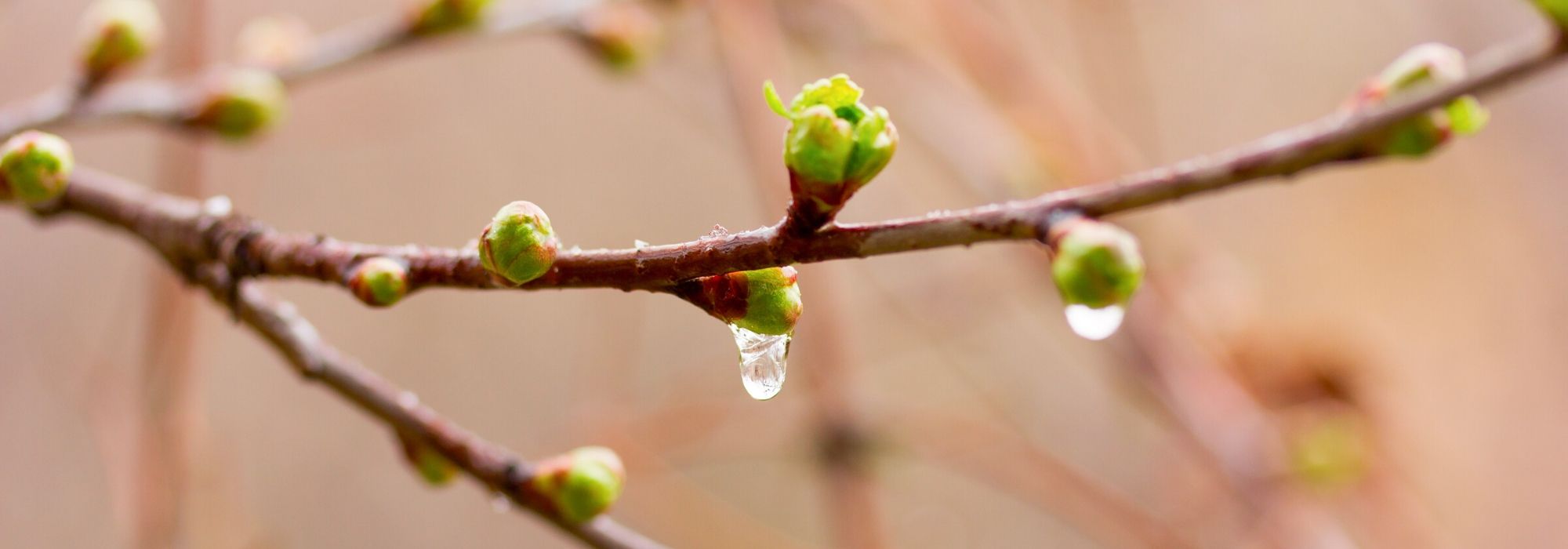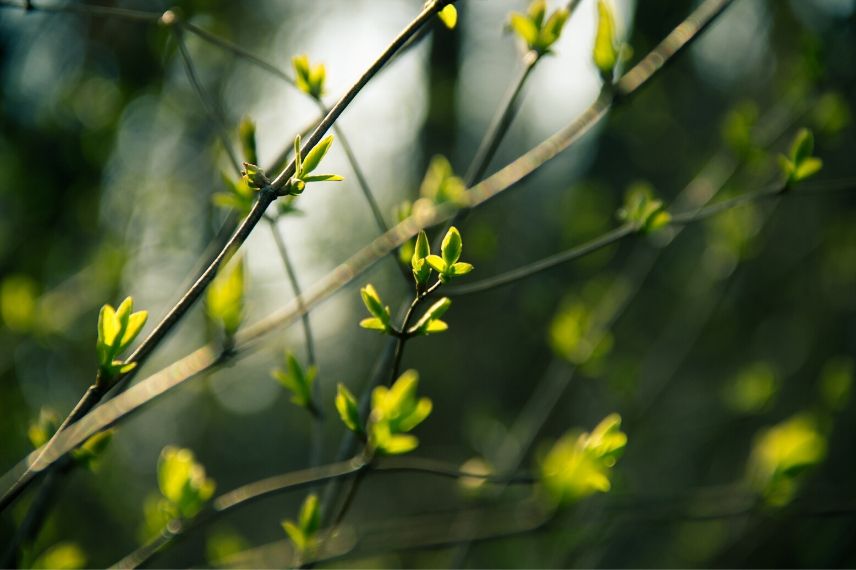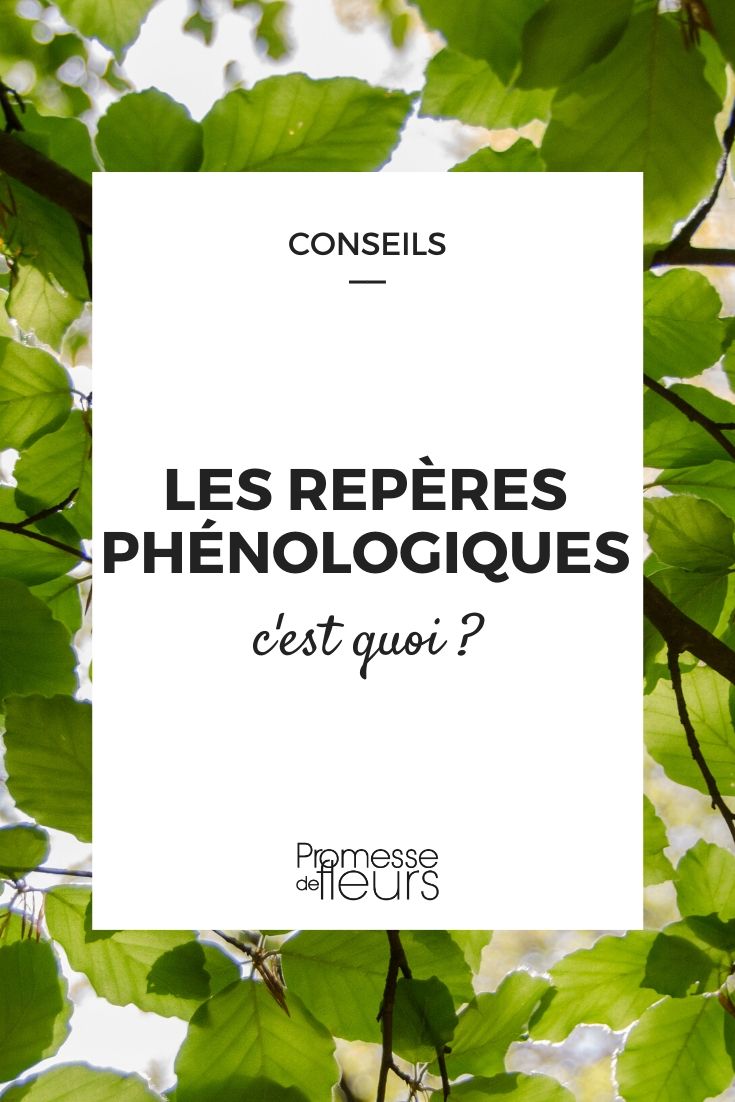
What are phenological indicators?
What are they for and how do you use them?
Contents
Relying on a calendar for sowing, pruning and treatments is often difficult, because depending on your climate or even the weather everything can change! Indeed, spring or winter do not arrive at the same time in Lille as in Marseille… Fortunately, nature provides clear signals. You only need to observe the plants and animals around you to know whether it is really the right time to carry out a particular task in the garden. These are known as phenological cues! Here is everything you need to know about phenology and its practical applications.
What is phenology?
Phenology is a science, as indicated by suffix “logos“. And even a relatively recent science, since it only appeared around the 19th century. The term “phenology” could be translated from Greek as follows: study of what is apparent. Or more precisely and according to official definition: study of the appearance of periodic events in the living world, determined by seasonal variations in climate (day length, temperature, relative humidity of soil or atmosphere…).
In short, we will observe natural events around us in nature or even within our own garden: departure or return of migratory birds, end of hibernation, bud burst period or, conversely, leaf drop of certain trees and bushes, flowering in spring, appearance of insect larvae…

Bud burst period of bushes is a good phenological marker for gardeners
All this may seem very haphazard, even a little mystical. Yet it is not. It is quite serious and scientific!
Note: earlier it was mentioned that phenology is a recent science. Let us not forget, however, that for millennia people have observed plants and animals for their crops and harvests. We have somewhat forgotten this nowadays, but our grandparents paid attention to it. It would be good to return to this…
Phenology to the rescue of sowing and planting
Folko Kullman said: “Be attentive to appearance of buds, to changes in leaves, to fruiting of trees… When apple tree and lilac are flowering, for example, it is an obvious sign that spring has begun; when elder and hawthorn are flowering: summer has begun; then colchicums open and trees lose their leaves: autumn, of course!“
Phenology, observation of nature around us, can provide many clues. Particularly for timing of sowing in vegetable garden and ornamental garden. In practice, sowing dates shown on seed packets give an indication of best period to sow but this “ideal time” varies according to region where garden is located. For example: it is not uncommon to see on packets of dwarf or runner beans: sowing possible from April. Admittedly… but that is in the south of France! I can assure you that in my cold, damp Belgium and in my clay soil (also cold and damp), sowing beans before late May, or even early June, is doomed to fail.

Use phenological cues to time your sowing correctly!
Here are some practical examples of using phenological cues for your sowing:
- At dogwood flowering: complete bare-root planting of trees and bushes;
- At forsythia flowering: try sowing leafy vegetables and peas;
- When lawn is tall enough for first mow: sow radishes, spinach, lettuce, leeks and parsley, and plant onions and shallots;
- At flowering of apple trees: sow chard, beetroot, carrots, cabbages and celery;
- At lilac flowering: plant potatoes and start checking bean seed packets;
- At rose flowering: plant tomatoes, peppers, chillies and aubergines in open ground, as well as courgettes and cucumbers.
Oli’s little note: when I was a child, my father, an amateur ornithologist, waited for return of migratory chiffchaff and above all for its characteristic song (tchif-tchaf tchif-tchaf) around late February before starting sowing in the vegetable patch. I should have listened to him (both my father and the chiffchaff!), it would have saved me a few disappointments…
Phenology also gives the go-ahead for pruning.
Phenology can also provide a good indication for pruning fruit trees, bushes or roses. Thus, Forsythia flowering gives the green light for pruning roses in late winter, while the bud burst period of fruit trees indicates the right time to prune them.
Phenology must also be taken into account for treatments.
Phenology is taken very seriously by fruit producers, farmers and winegrowers. Especially when treating certain diseases or parasitic organisms. Professionals cannot afford to treat “at random”. They therefore need precise dates.
They take into account weather, temperature, climate, development stage of trees or fruit but above all emergence of any predators or parasitic organisms. This allows them to treat at the most opportune time.
There are data for each species of plant in cultivation and for each treatment. Thus producers know exactly when to place traps or treat trees and vines.
We can obviously apply this in our own gardens.

Phenological markers also make it possible to treat at the right time
Phenology takes care of our health
Phenology is also very important for helping people allergic to pollen. Indeed, this science makes it possible to pinpoint precisely the periods that are most problematic for different species and in different locations.
Other applications of phenology
Phenology also plays a part in cases of cross-pollination. You must choose different varieties of fruit trees (pears, apples…) whose flowering dates coincide, otherwise you will not get pollination. This may seem very easy; simply check flowering dates on labels. That said, in practice flowering dates can vary depending on soil, exposure and climate. To avoid future problems, therefore obtain information from professionals or enthusiasts in your area when choosing fruit-tree varieties!
Note: you can also opt for self-fertile varieties that ‘manage’ on their own.
Your own observations can also be a good indication.
Not everything is in books and plant behaviour can vary from one garden to another. In fact, this is often the case. In such situations, nothing beats your own observations, patiently compiled in notebooks over the years. A colleague who lives in the South, Elizabeth, pointed out to me that when Ipheon is in bud, her tortoises emerged from hibernation (and vice versa). She even nicknamed this plant the tortoise star.
Do as she did and make your own observations. We’re keen to hear them, so don’t hesitate to share them in the comments.
- Subscribe!
- Contents
































Comments